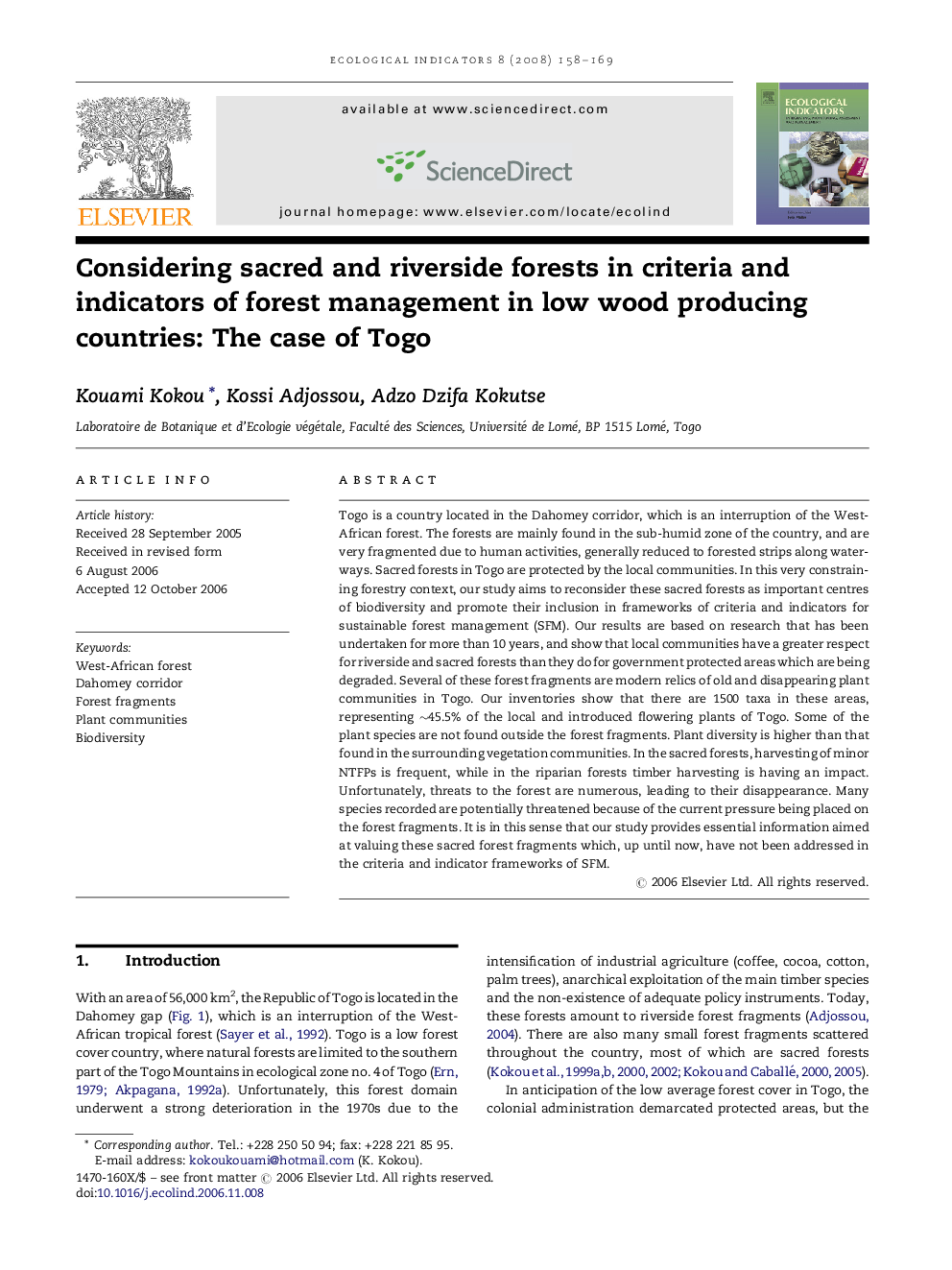| Article ID | Journal | Published Year | Pages | File Type |
|---|---|---|---|---|
| 4374630 | Ecological Indicators | 2008 | 12 Pages |
Togo is a country located in the Dahomey corridor, which is an interruption of the West-African forest. The forests are mainly found in the sub-humid zone of the country, and are very fragmented due to human activities, generally reduced to forested strips along waterways. Sacred forests in Togo are protected by the local communities. In this very constraining forestry context, our study aims to reconsider these sacred forests as important centres of biodiversity and promote their inclusion in frameworks of criteria and indicators for sustainable forest management (SFM). Our results are based on research that has been undertaken for more than 10 years, and show that local communities have a greater respect for riverside and sacred forests than they do for government protected areas which are being degraded. Several of these forest fragments are modern relics of old and disappearing plant communities in Togo. Our inventories show that there are 1500 taxa in these areas, representing ∼45.5% of the local and introduced flowering plants of Togo. Some of the plant species are not found outside the forest fragments. Plant diversity is higher than that found in the surrounding vegetation communities. In the sacred forests, harvesting of minor NTFPs is frequent, while in the riparian forests timber harvesting is having an impact. Unfortunately, threats to the forest are numerous, leading to their disappearance. Many species recorded are potentially threatened because of the current pressure being placed on the forest fragments. It is in this sense that our study provides essential information aimed at valuing these sacred forest fragments which, up until now, have not been addressed in the criteria and indicator frameworks of SFM.
